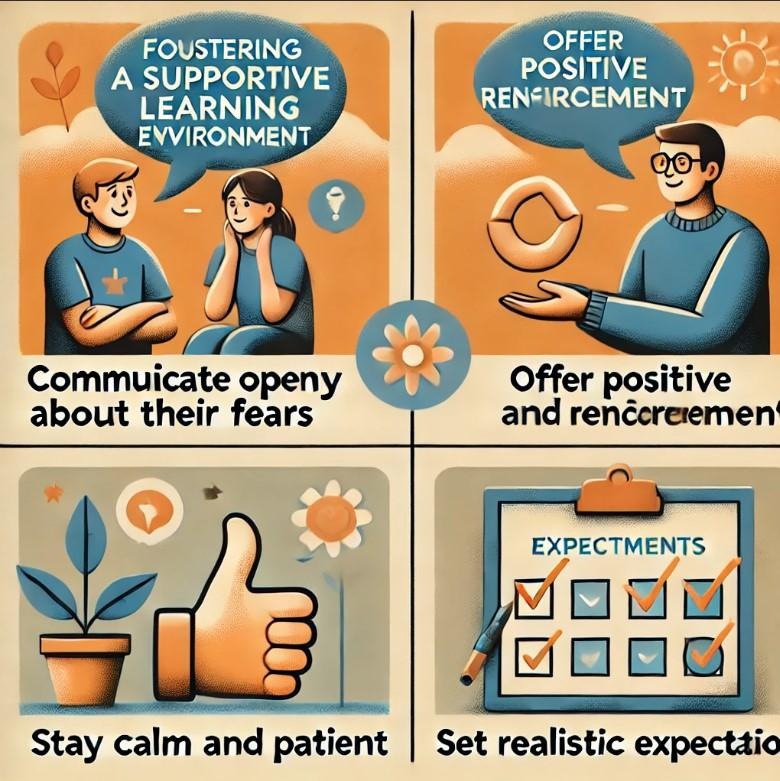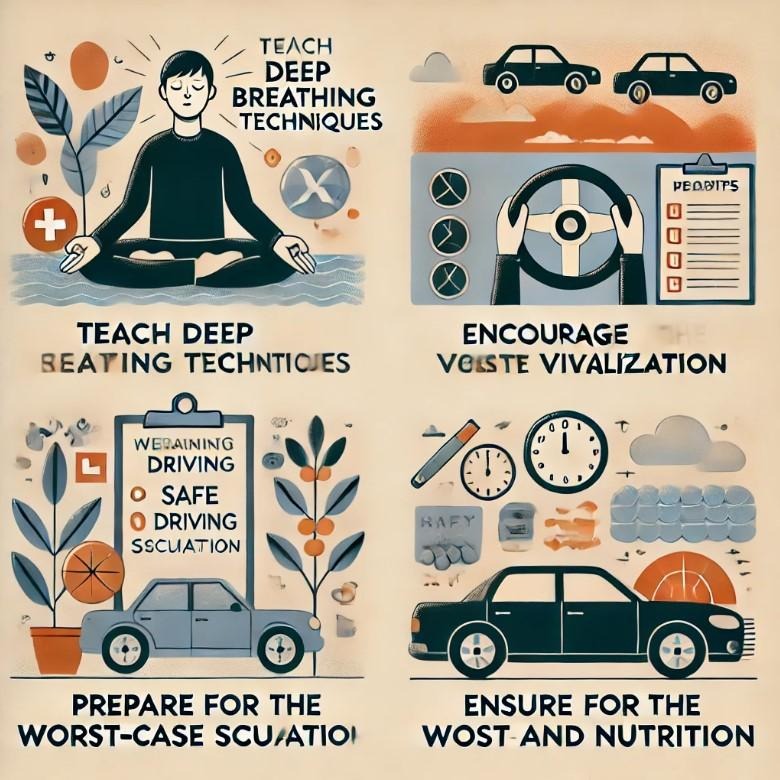Learning to drive is a significant milestone for teenagers, symbolizing newfound independence and responsibility. However, for many teens, the excitement of getting behind the wheel is often accompanied by a sense of anxiety. This fear can stem from various sources, such as the pressure to perform well, the fear of accidents, or simply the overwhelming nature of managing a vehicle on the road. As a parent, it’s crucial to recognize these anxieties and take proactive steps to help your teen build the confidence they need to become safe and self-assured drivers.
This blog will explore practical strategies to address and reduce teen driving anxiety, focusing on building confidence behind the wheel. Whether you're guiding your child through a parent taught drivers education texas course or preparing them for driver's education online, these tips will help create a supportive environment that fosters confidence and reduces stress.
Understanding Common Driving Anxieties in Teens
1. Fear of Accidents

One of the most common sources of anxiety for teen drivers is the fear of being involved in an accident. This fear is often exacerbated by stories of crashes on the news or hearing about accidents involving peers. While it's natural to worry about safety, excessive anxiety can hinder a teen's ability to drive confidently.
2. Pressure to Perform
Many teens feel intense pressure to drive perfectly, especially when learning under the watchful eyes of their parents or an instructor. This pressure can lead to stress and nervousness, making it difficult for them to focus on the road.
3. Overwhelm with Traffic Situations

Navigating complex traffic situations, such as merging onto a busy highway or handling a crowded intersection, can be overwhelming for new drivers. The unpredictability of other drivers’ actions adds to their anxiety, making them feel unsure of their ability to handle the situation.
4. Lack of Familiarity with Vehicle Controls
A lack of familiarity with the vehicle's controls and features can also contribute to anxiety. New drivers may worry about operating the car correctly, from adjusting the mirrors to understanding how to use the windshield wipers or headlights.
Understanding these common anxieties is the first step in addressing them. By acknowledging these fears, parents can take a more empathetic approach, offering the support and guidance teens need to overcome their worries.
Building Confidence Through Practice
1. Start with Low-Stress Environments

Begin by practicing in low-stress environments where your teen can focus on mastering basic driving skills without the added pressure of heavy traffic or complex road situations. Empty parking lots or quiet residential streets are ideal places to start. These settings allow your teen to become comfortable with vehicle operation and basic maneuvers, such as turning, stopping, and parking, without feeling overwhelmed.
2. Gradually Introduce More Challenging Situations
As your teen becomes more comfortable behind the wheel, gradually introduce more challenging driving scenarios. Start by driving on roads with moderate traffic, then progress to more complex situations, such as highways or busy intersections. This gradual exposure helps build confidence as your teen experiences different driving conditions in a controlled manner.
3. Encourage Consistent Practice

Consistency is key to building confidence. Encourage your teen to practice driving regularly, even if it's just for short periods. The more time they spend behind the wheel, the more familiar and comfortable they will become with different driving scenarios. This regular practice also reinforces the skills they’ve learned, making them second nature over time.
4. Use Parent-Taught Drivers Ed Programs
Enrolling in a parent-taught driving course in Texas program is an excellent way to give your teen a structured, comprehensive driving education while allowing you to guide their learning process. Programs like the Texas Parent Taught Drivers Ed courses provide a combination of online lessons and behind-the-wheel practice, helping your teen build confidence in a supportive, familiar environment. These approved parent-taught driver's ed Texas courses are designed to be flexible, allowing you to tailor the pace of learning to your teen's comfort level.
Fostering a Supportive Learning Environment

1. Communicate Openly About Their Fears
Create an open line of communication where your teen feels comfortable discussing their fears and anxieties about driving. Listen to their concerns without judgment, and reassure them that it’s normal to feel nervous when learning something new. By validating their feelings, you can work together to address specific fears and develop strategies to overcome them.
2. Offer Positive Reinforcement
Positive reinforcement is a powerful tool in building confidence. Celebrate your teen’s successes, no matter how small, and provide constructive feedback in a supportive manner. For example, if your teen successfully navigates a tricky intersection, acknowledge their achievement and explain why their actions were effective. This reinforcement helps them recognize their progress and encourages them to continue improving.
3. Stay Calm and Patient
Your demeanor as a parent plays a significant role in your teen’s confidence levels. Staying calm and patient, even when mistakes are made, can help your teen feel more at ease. If you become anxious or frustrated, your teen is likely to pick up on those emotions, which can increase their anxiety. Instead, approach each driving session as an opportunity for learning and growth, focusing on progress rather than perfection.
4. Set Realistic Expectations
Set realistic expectations for your teen’s learning process. Understand that becoming a confident driver takes time, and mistakes are a natural part of that journey. By setting achievable goals and celebrating progress along the way, you can help your teen develop a positive mindset toward learning to drive.
Practical Tips for Reducing Anxiety

1. Teach Deep Breathing Techniques
Deep breathing is an effective way to manage anxiety and stay calm in stressful situations. Teach your teen to take slow, deep breaths if they start to feel overwhelmed while driving. This simple technique can help them regain focus and control their nerves.
2. Encourage Visualization
Visualization is a powerful tool for building confidence. Encourage your teen to visualize themselves successfully handling different driving situations. By mentally rehearsing these scenarios, they can build a sense of familiarity and confidence before facing them in real life.
3. Prepare for the Worst-Case Scenario
Sometimes, discussing worst-case scenarios and how to handle them can reduce anxiety. Knowing that they have a plan in place for unexpected situations—like what to do if the car breaks down or if they get lost—can give your teen peace of mind and help them feel more in control.
4. Ensure Adequate Rest and Nutrition
Physical well-being plays a significant role in managing anxiety. Encourage your teen to get plenty of rest before driving and to eat a balanced meal. Being well-rested and nourished can improve focus and reduce the likelihood of feeling overwhelmed.

